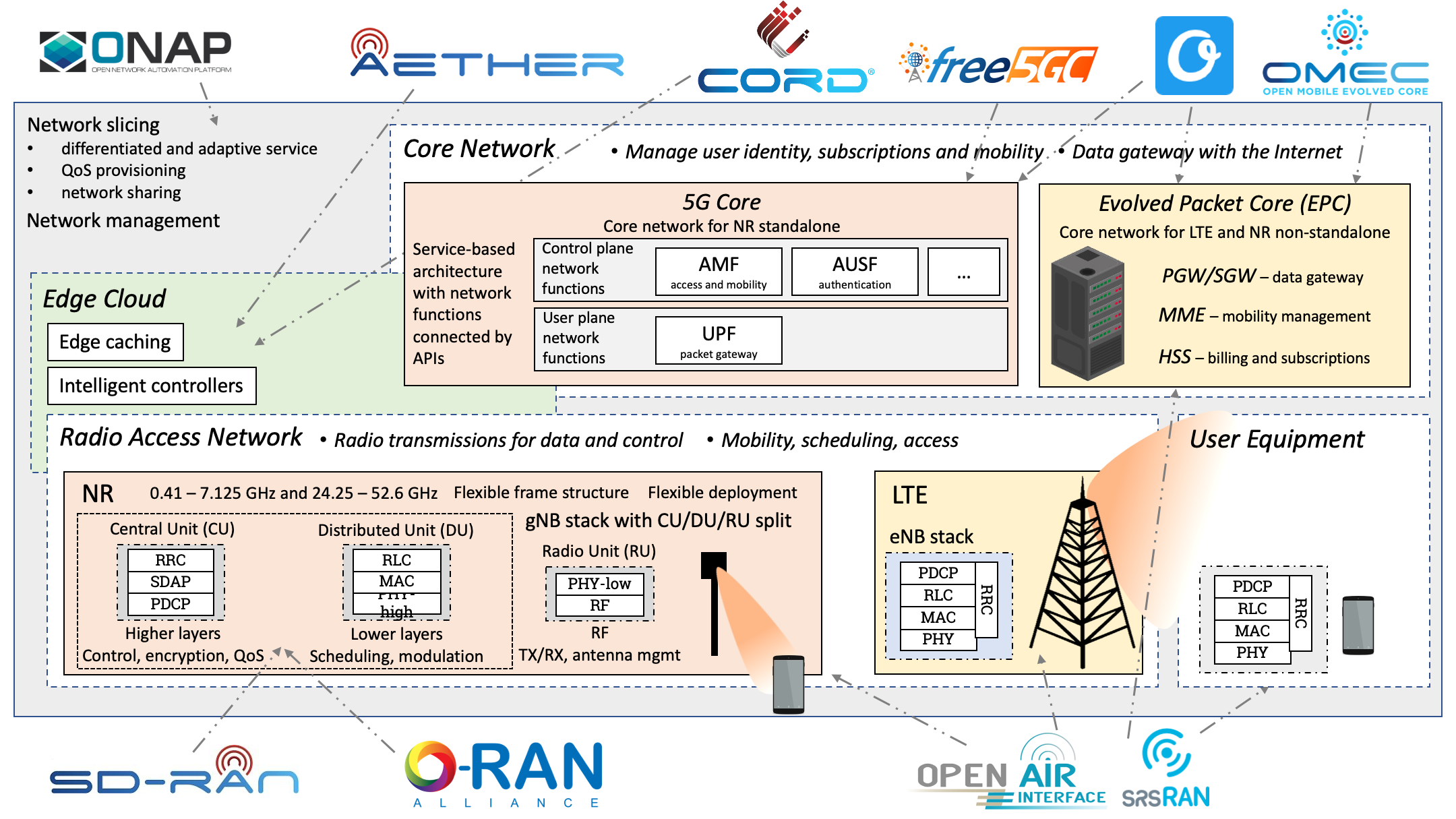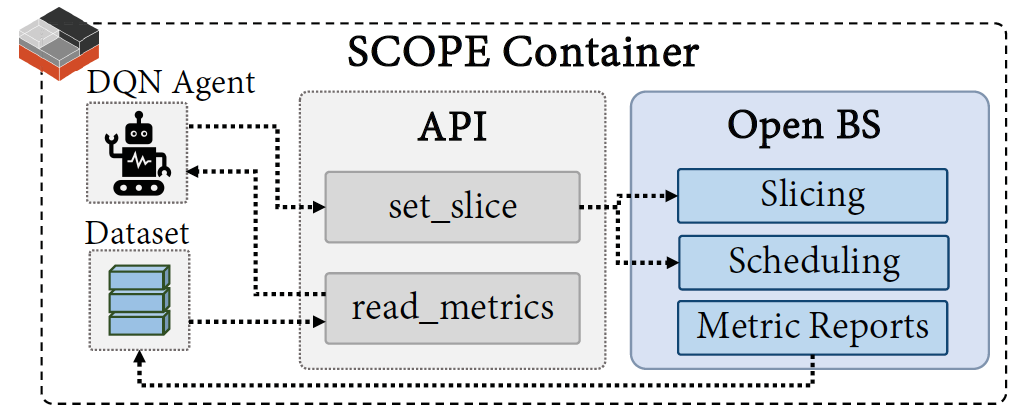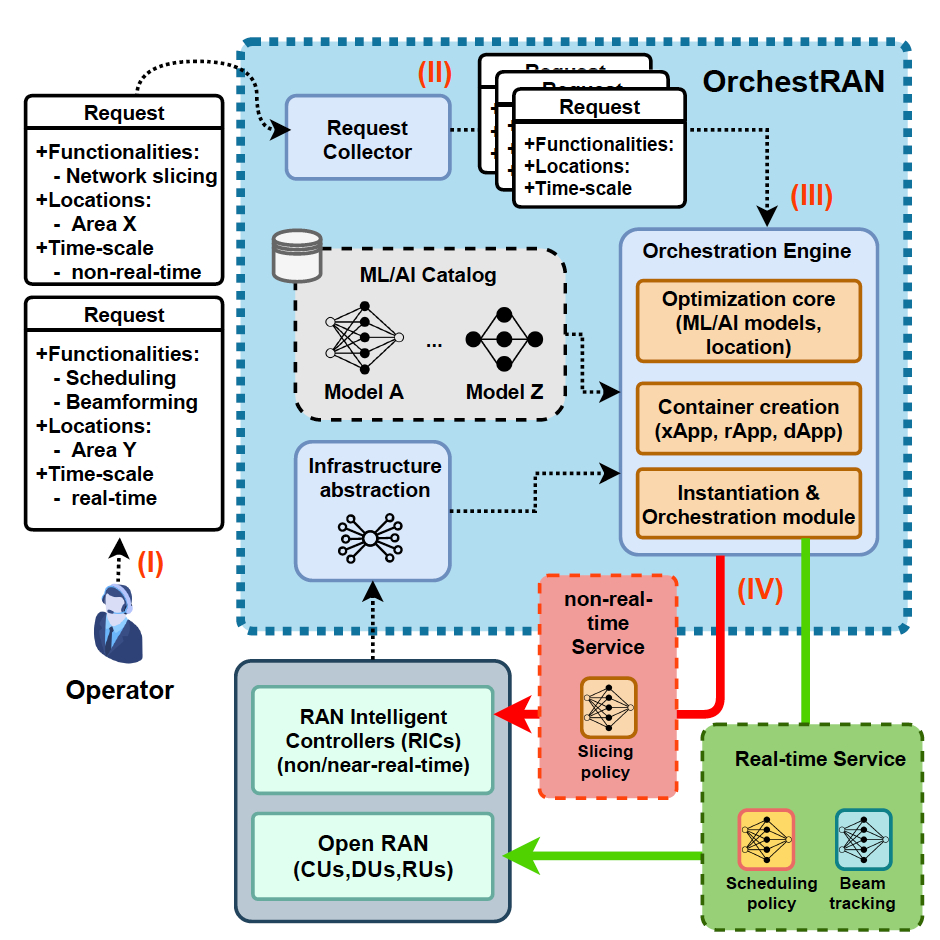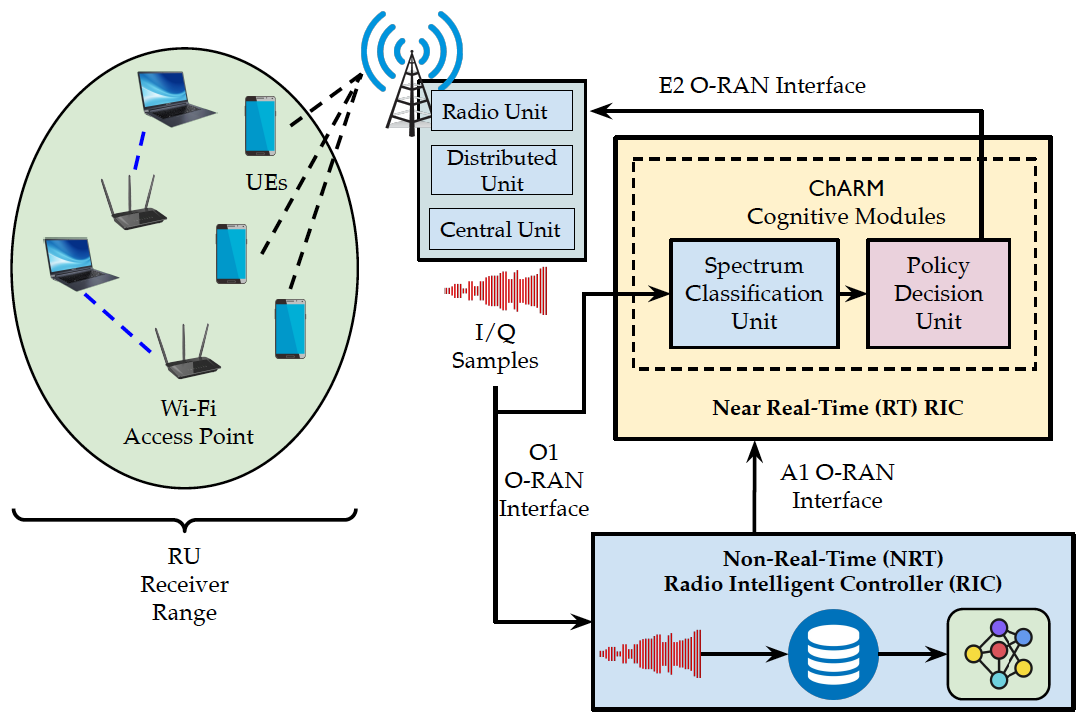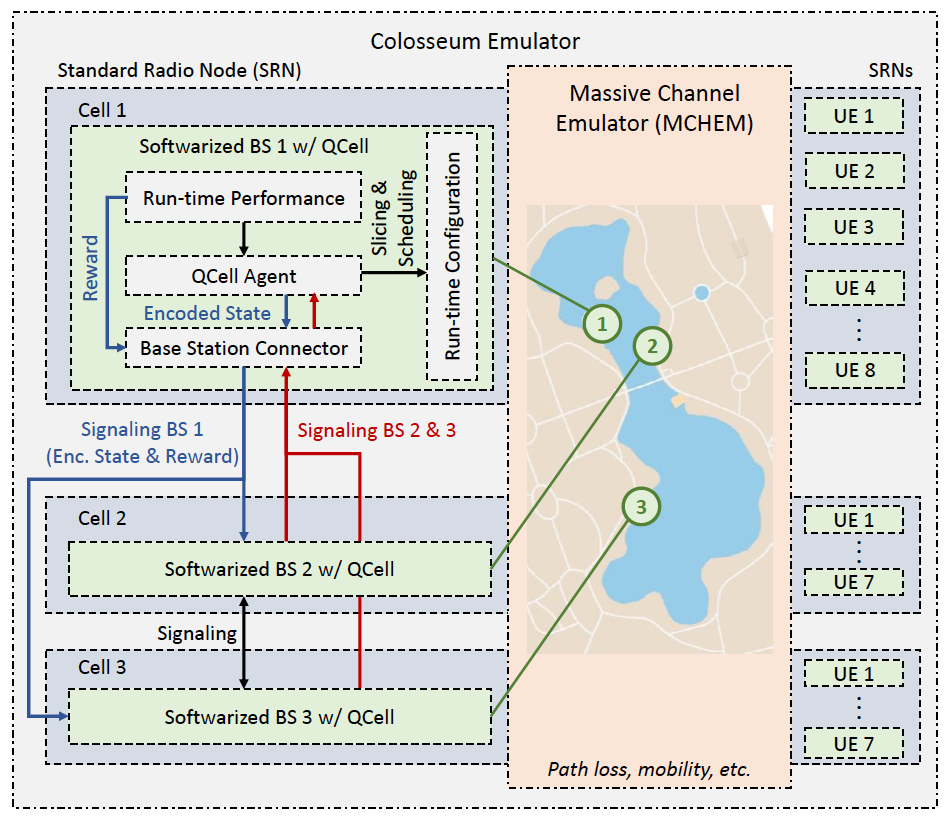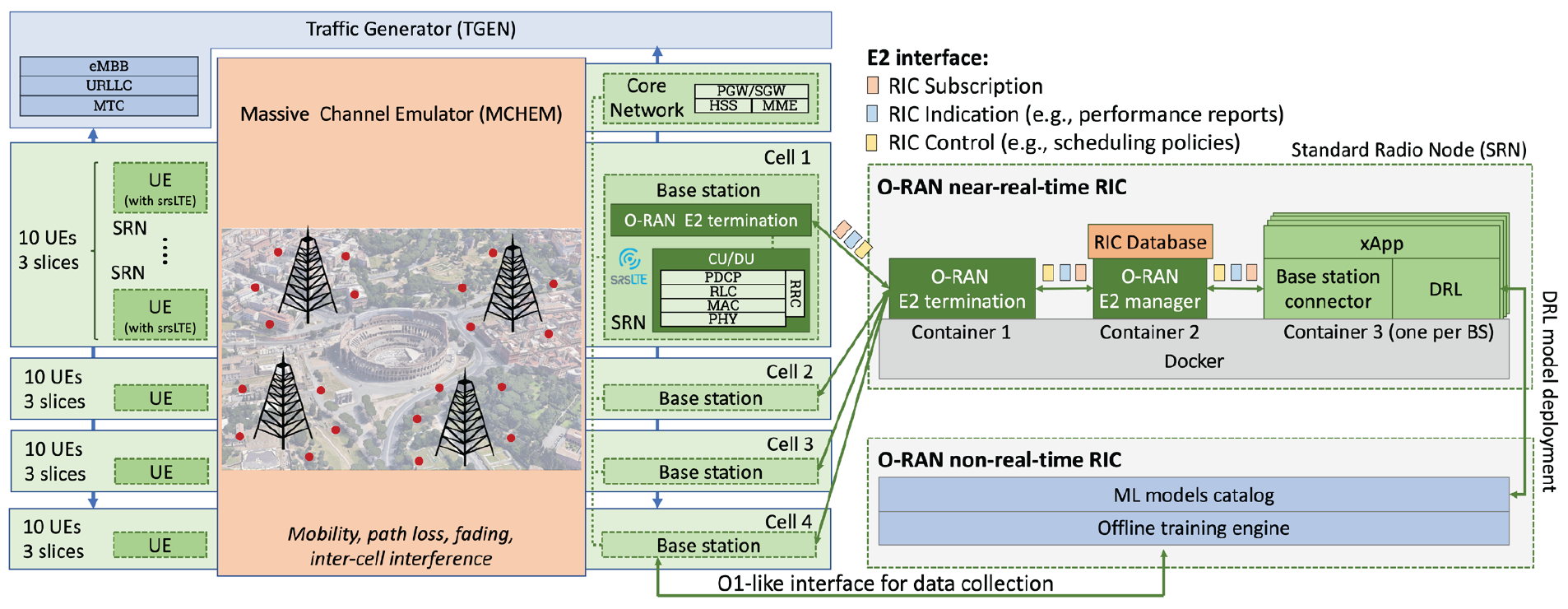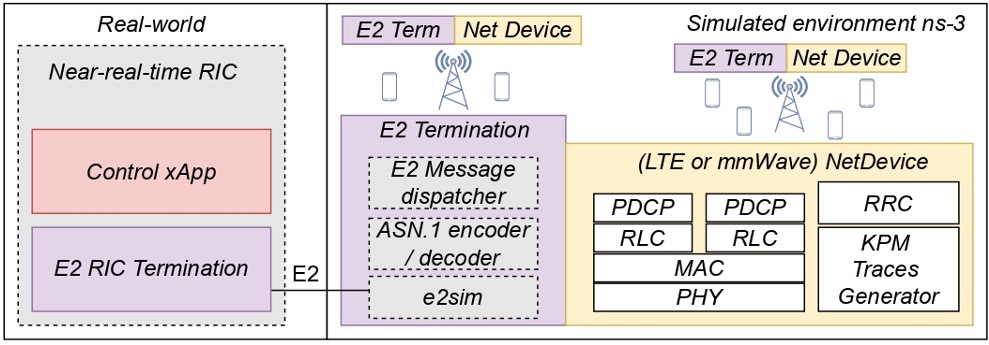Open RAN
Datasets
-
Data-driven O-RAN-compliant NextG Networks. [link]
Publications
-
A. Lacava, M. Bordin, M. Polese, R. Sivaraj, T. Zugno, F. Cuomo, T. Melodia "ns-O-RAN: Simulating O-RAN 5G Systems in ns-3" Proceedings of the 2023 Workshop on ns-3, WNS3 ’23, (New York, NY, USA), p. 35–44, Association for Computing Machinery, June 2023 [pdf] [bibtex]
-
A. Lacava, M. Polese, R. Sivaraj, R. Soundrarajan, B. S. Bhati, T. Singh, T. Zugno, F. Cuomo, T. Melodia "Programmable and Customized Intelligence for Traffic Steering in 5G Networks Using Open RAN Architectures" IEEE Transactions on Mobile Computing January 2023 [pdf] [bibtex]
-
L. Bonati, M. Polese, S. D'Oro, S. Basagni, T. Melodia, "Intelligent Closed-loop RAN Control with xApps in OpenRAN Gym," Proc. of European Wireless 2022, Dresden, Germany, September 2022. [pdf] [bibtex]
-
S. D'Oro, M. Polese, L. Bonati, H. Cheng, and T. Melodia, "dApps: Distributed Applications for Real-time Inference and Control in O-RAN," IEEE Communications Magazine, 2022. [pdf] [bibtex]
-
M. Polese, L. Bonati, S. D'Oro, S. Basagni, T. Melodia, "Understanding O-RAN: Architecture, Interfaces, Algorithms, Security, and Research Challenges", IEEE Communications Surveys & Tutorials, January 2023. [pdf] [bibtex]
-
L. Bonati, M. Polese, S. D'Oro, S. Basagni, T. Melodia, "OpenRAN Gym: AI/ML Development, Data Collection, and Testing for O-RAN on PAWR Platforms," Computer Networks, vol. 220, pp. 1-11, January 2023. [pdf] [bibtex]
-
M. Polese, L. Bonati, S. D'Oro, S. Basagni, T. Melodia, "ColO-RAN: Developing Machine Learning-based xApps for Open RAN Closed-loop Control on Programmable Experimental Platforms", IEEE Transactions on Mobile Computing, pp. 1-14, July 2022. [pdf] [bibtex]
-
L. Bonati, M. Polese, S. D'Oro, S. Basagni, T. Melodia, "OpenRAN Gym: An Open Toolbox for Data Collection and Experimentation with AI in O-RAN," Proc. of IEEE WCNC Workshop on Open RAN Architecture for 5G Evolution and 6G, Austin, TX, USA, April 2022. [bibtex]
-
L. Bonati, S. D'Oro, S. Basagni, and T. Melodia, "SCOPE: An Open and Softwarized Prototyping Platform for NextG Systems," in Proc. of ACM Intl. Conf. on Mobile Systems, Applications, and Services (MobiSys), Virtual Conference, June 2021. [pdf] [bibtex]
-
S. D'Oro, L. Bonati, M. Polese, T. Melodia, "OrchestRAN: Network Automation through Orchestrated Intelligence in the Open RAN," Proc. of IEEE Intl. Conf. on Computer Communications (INFOCOM), May 2022. [pdf] [bibtex]
-
L. Baldesi, F. Restuccia, T. Melodia, "ChARM: NextG Spectrum Sharing Through Data-Driven Real-Time O-RAN Dynamic Control," Proc. of IEEE Intl. Conf. on Computer Communications (INFOCOM), May 2022. Best Paper Award [pdf] [bibtex]
-
B. Casasole, L. Bonati, S. D'Oro, S. Basagni, A. Capone, and T. Melodia, "QCell: Self-optimization of Softwarized 5G Networks through Deep Q-learning", Proc. of IEEE Global Communications Conference (GLOBECOM), Madrid, Spain, December 2021. [pdf] [bibtex]
-
L. Bonati, S. D'Oro, M. Polese, S. Basagni, and T. Melodia, "Intelligence and Learning in O-RAN for Data-driven NextG Cellular Networks", IEEE Communications Magazine, vol. 59, no. 10, pp. 21–27, October 2021. [pdf] [bibtex]
-
L. Bertizzolo, T. X. Tran, J. Buczek, B. Balasubramanian, Y. Zhou, R. Jana, and T. Melodia, "Streaming from the Air: Enabling Drone-sourced Video Streaming Applications on 5G Open-RAN Architectures," IEEE Transactions on Mobile Computing, November 2021. [pdf] [bibtex]
-
L. Bonati, M. Polese, S. D'Oro, S. Basagni, and T. Melodia, "Open, Programmable, and Virtualized 5G Networks: State-of-the-Art and the Road Ahead," Computer Networks, vol. 182, August 2020. [pdf] [bibtex]
Patent Applications
- Intelligence and Learning in O-RAN for 5G and 6G Cellular Networks
- Zero-touch Deployment and Orchestration of Network Intelligence in Open RAN Systems
- ChARM: NextG Spectrum Sharing Through Data-Driven Real-Time O-RAN Dynamic Control



